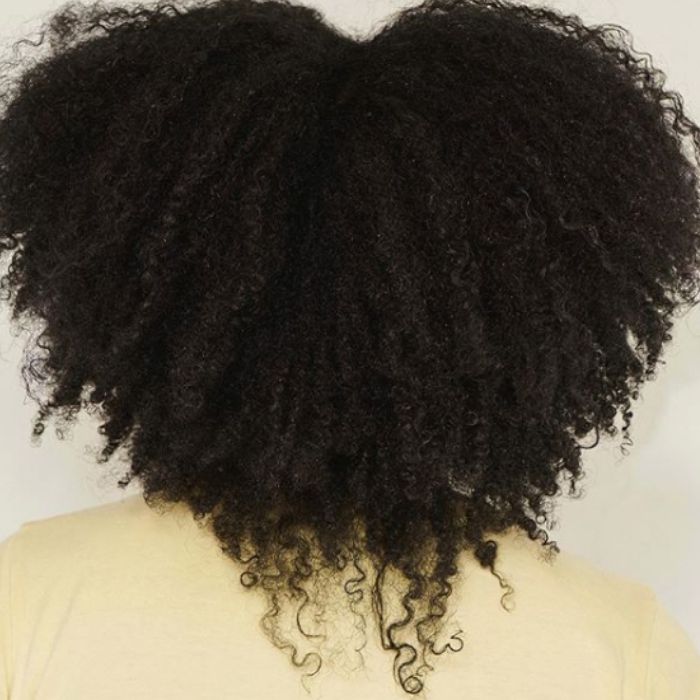
Image: @thecurlbarlondon
Transitioning hair is notoriously difficult to detangle. It is fragile, prone to breakage, and in need of special care. The following tips can help get out the knots without causing additional stress and trauma.
1. Determine the type of damage you have
Determine the type of damage your hair has so that you can best address it with the right products. Damage from bleach, relaxers, and many chemical processes tend to affect the integrity of the hair shaft which increases the hair’s porosity. Chemically-created high-porosity hair tends to stick to itself, be over-elastic, weak, and prone to snapping off. It responds well to masques and deep conditioners with protein or coconut oil in them (look for the word “strengthening” on the product label). Conversely, hair that is dry, brittle, and resistant to moisture may have become lower porosity. A good example of this is when you repeatedly dye high porosity hair with demi-permanent hair dye, or use henna treatments. Over time, the hair will have a permanent layer of color on it. The parts of the hair shaft with color will feel rough and dry, and the curl pattern will be affected. To soften the hair and restore some elasticity, choose highly moisturizing conditioning treatments, used in tandem with a Hot Head.
2. Pre-poo
All hair types can benefit from pre-pooing. To do this, follow these steps:
- Section your hair.
- On each section, apply an oil or pre-poo product, massaging it into your ends.
- Detangle your hair using your fingers primarily. If you need to use a wide-toothed comb, do so sparingly, and start with the ends of your hair and work your way upward.
- As you complete each section, clip it with a duckbill clip before moving on to the next.
- Apply shampoo at the roots of your hair, add a little water, and then carefully massage your scalp.
- Work it down the hair shaft one section at a time, pulling the shampoo through to the ends. Break up any new tangles that may have formed.
- Rinse carefully, and follow with your favorite conditioner.
For products that will work for all hair types, including finer transitioning ends see this article, How to Pre-Poo Fine Curly Hair for an Easy Washday.
3. Detangle upside down
Try flipping your head over so you can detangle your hair upside down. This tip works best for high-porosity, fine-density hair that tends to stick to itself, making it hard to reach the layers at the back of your head.
- Apply your favorite conditioner to thoroughly saturated hair.
- Flip your head over and detangle with your head upside down starting with the back of your head. Use your fingers, and if need-be a wide-toothed comb.
- Flip your head back over and detangle any curls that have re-tangled.
4. Get serious about slip
Choose products that contain good slip, which will coat the hair and make it easier to work with. Besides conditioners, there are detanglers that can streamline the detangling process.
5. Get regular trims
Transitioning hair is prone to dry, brittle, thin ends that split up the hair shaft if not removed at regular intervals. They can cause you to lose length, and can drag down your natural curl pattern. You will find that regular trims make detangling faster and easier.
What are your favorite detangling tips for transitioning hair? Let us know in the comments.
For more tips, read How to Detangle Curly Hair next.
